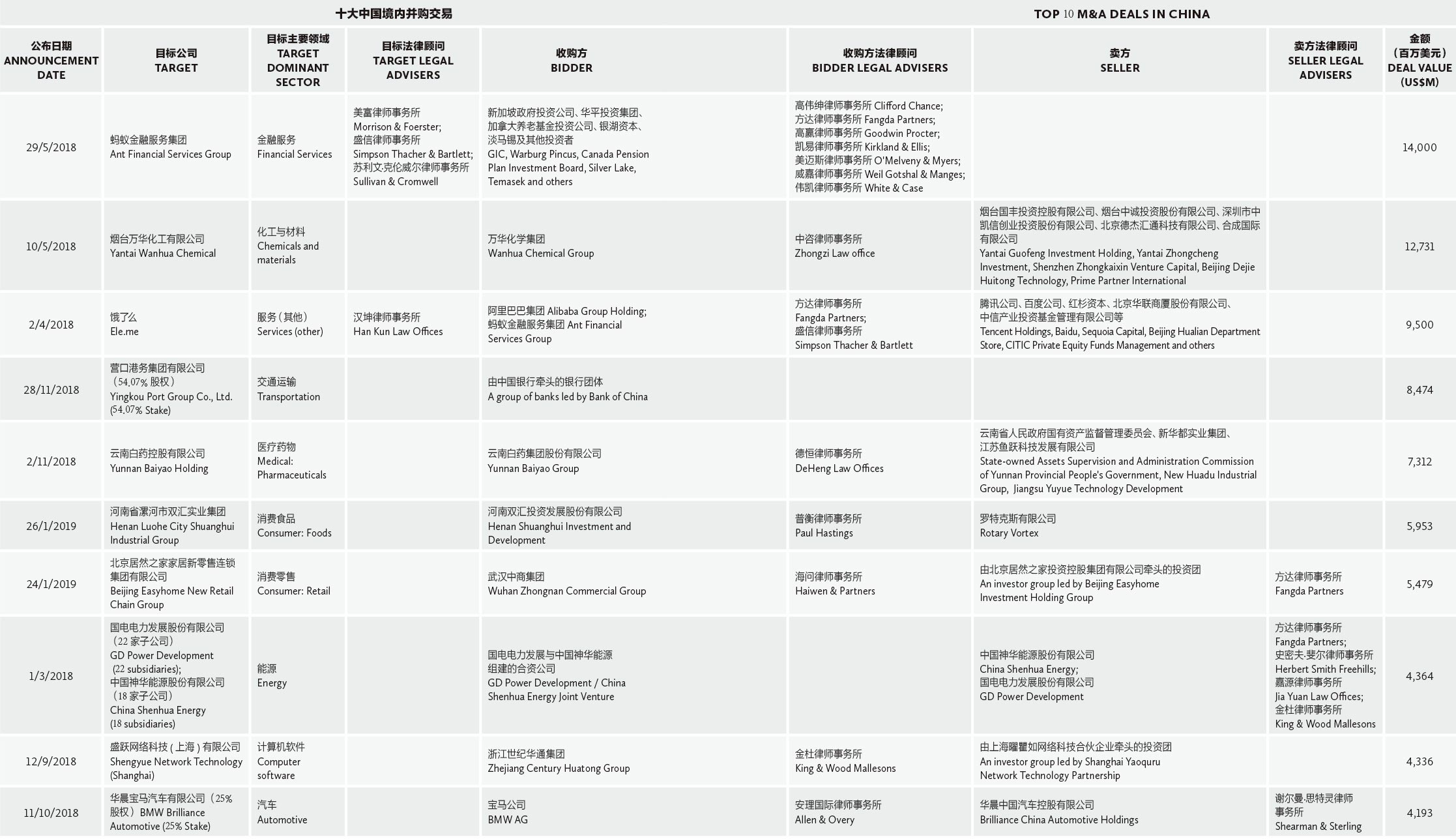M&A activity is undergoing a resurgence and there are now plenty of fish in the sea for acquirers looking to hook up with undervalued companies. Paul Cheuk reports
2018 was a year of turmoil for China’s M&A market. In the first half of the year the market continued in a trough that persisted from previous years. But in the third quarter, the Chinese Securities Regulatory Commission (CSRC) took action, unleashing a fresh wave of regulatory policies aimed at revitalizing the M&A market, from setting up a new examination regime, lowering the share issues requirement for fund raising, and speeding up examination and approval processes.
In 2019, these policy reforms, along with a new law on foreign investment, are in place, and legal experts are optimistic that, as these gain traction, the year looks bright for M&A.
NEW POLICIES
Under the so-called “small-sum rapid” examination scheme, the examination procedures are greatly simplified and hastened for those eligible, says Ren Wei, a partner at Jingtian & Gongcheng in Beijing. “Their cases will be directly submitted to the M&A and restructuring committee at the CSRC, bypassing the preview stage, etc.”
A company must fulfil one of two criteria to be eligible for the small-sum rapid scheme. The first condition is for a company to have an accumulative sum in the M&A transaction of less than RMB500 million (US$74.6 million) in the past 12 months. The second is for a company to have issued shares for the M&A transaction in an amount less than 5% of the company’s total shares, and having an accumulative sum of transaction under RMB1 billion in the past 12 months.
The CSRC has announced a number of specific industries that will be “white-listed” for a rapid channel, putting high-tech industries ahead of the line and including aerospace equipment, ocean engineering and high-tech ships, advanced railway equipment, electric equipment, and the biotechnology sector.
The market responded well to the new scheme, Ren says. “The very first case through the rapid channel was approved on 18 October 2018, and it took a total of only 15 days,” he says. “For small and medium projects like this, this new scheme will greatly enhance the efficiency of M&A examinations and shorten the time needed for transactions.”
The CSRC has also relaxed the regulation on companies purchasing assets through issuance of shares and raising supporting funds. On 12 October 2018, the commission released the Questions and Answers on Listed Companies Issuing Shares to Purchase Assets and Raise the Supporting Funds at the Same Time. Wang Yuan, a senior partner at Jia Yuan Law Offices in Shanghai, explains that this policy statement will allow supporting funds raised in an M&A transaction to also be used to “replenish short-term capital of a company, or to repay debt, as long as that amount being used is not above 25% of the total transaction sum.”
The rules regarding the power of majority shareholders in share issues during M&A are also relaxed. This relaxation serves to revert some pervious rules, set in 2016, that blocked the ability of a controlling shareholder to strengthen its control through various transaction designs.
It is expected that this expansion of uses of funds raised through shares issues in acquisitions is expected to stimulate listed companies to participate in more M&A activity.
Another CSRC Q&A released on 20 October 2018, addressed the duration that a company would have to wait if it was previously turned down from participating in a restructuring and listing. From the original 36 months, the time that must be lapsed before the company can re-apply is now shortened to just six months.
Wang notes that since the 17th IPO review committee began its term, from September 2017, the number of IPO rejections rose sharply. The 156 companies that were rejected throughout 2016-2018, mostly between 2017 and 2018, amount to RMB292.8 billion (US$43.7 billion) in their valuation. However, the new Q&A changes mean that up to 137 out of these 156 rejected companies may begin planning for restructuring and IPO again, which will “add up to RMB263.8 billion in value, and these are some valuable and big-ticket targets for our M&A market”, says Wang.
In another welcome change announced on 1 November 2018, the CSRC will start trials to allow the use of convertible bonds in M&A transactions. Implementation and regulation details are yet to be promulgated, but in the market there are already several trial cases of companies paying for their acquisition prices by partly issuing convertible bonds. Wang says that “the use of convertible bonds is going to increase the flexibility of M&A negotiation, relieve the cash pressure for listed companies, and at the same time lower the risk of dilution faced by majority shareholders, and we shall see more expedient M&A deals if there are more of these to come”.
Although these policy initiatives are relatively new, it is crucial to look at the close proximity in time, and the sheer number of them being issued. What is agreed among practitioners is that these initiatives strongly signify to the market that the CSRC is prepared to more actively stimulate M&A activities and capital market reform.

You must be a
subscribersubscribersubscribersubscriber
to read this content, please
subscribesubscribesubscribesubscribe
today.
For group subscribers, please click here to access.
Interested in group subscription? Please contact us.






















